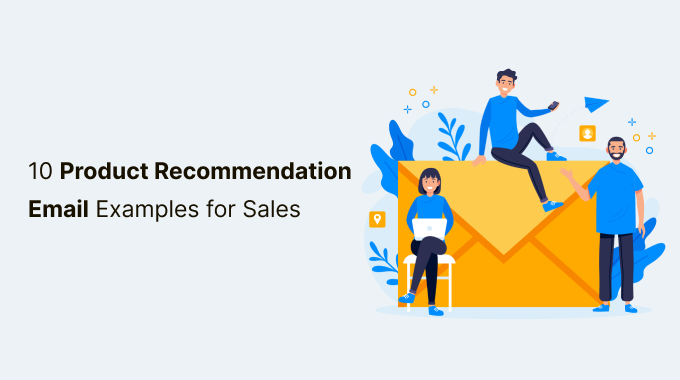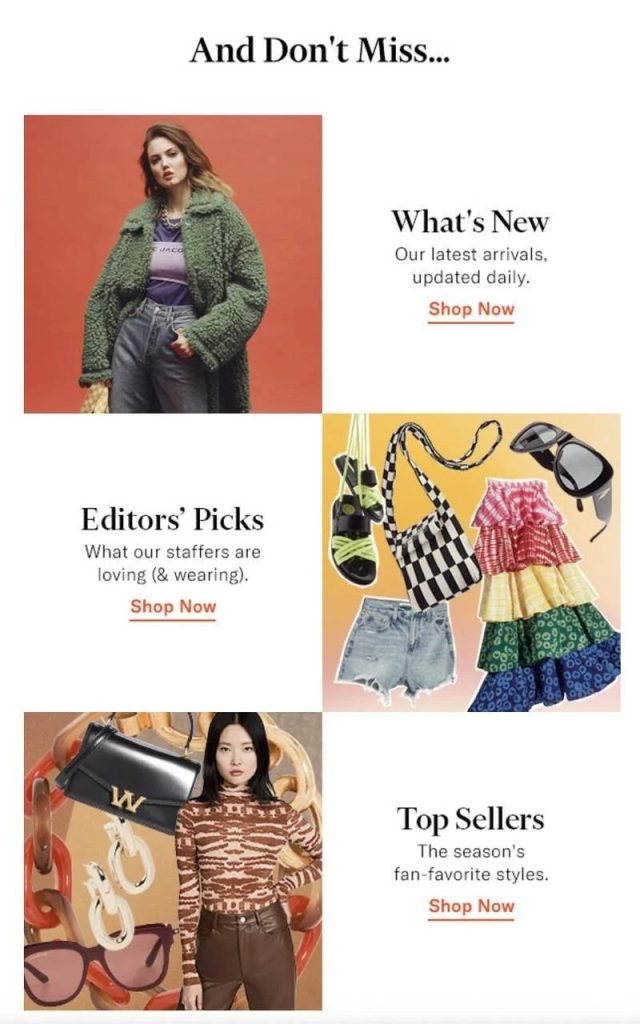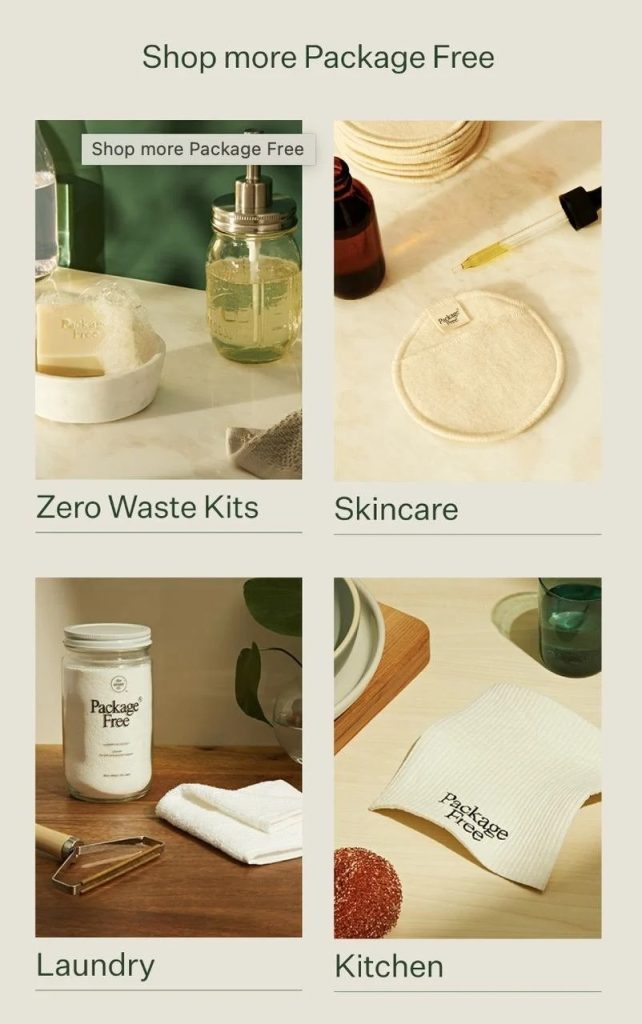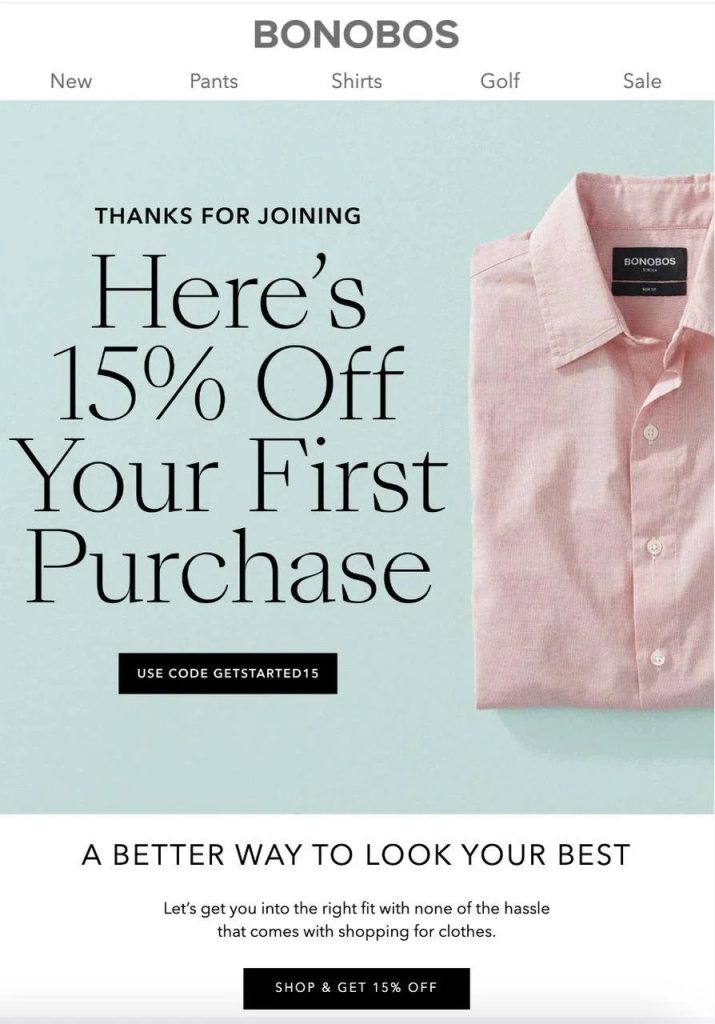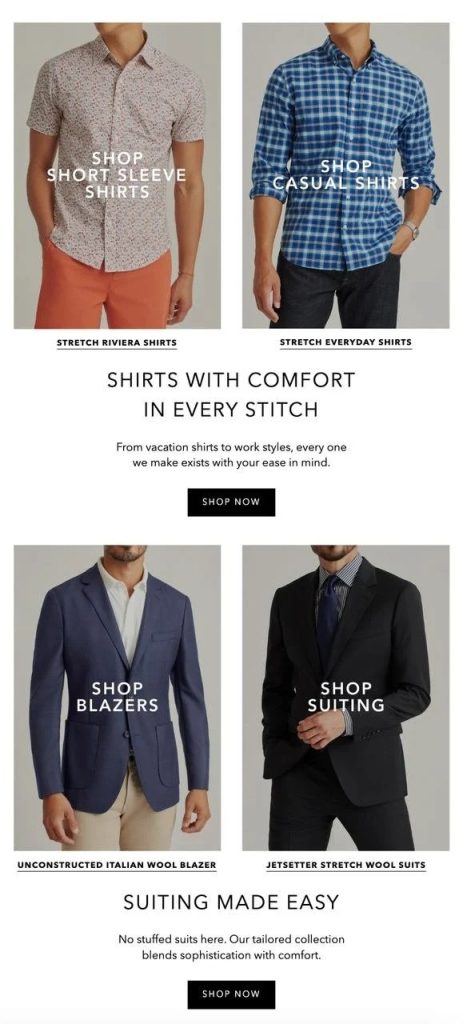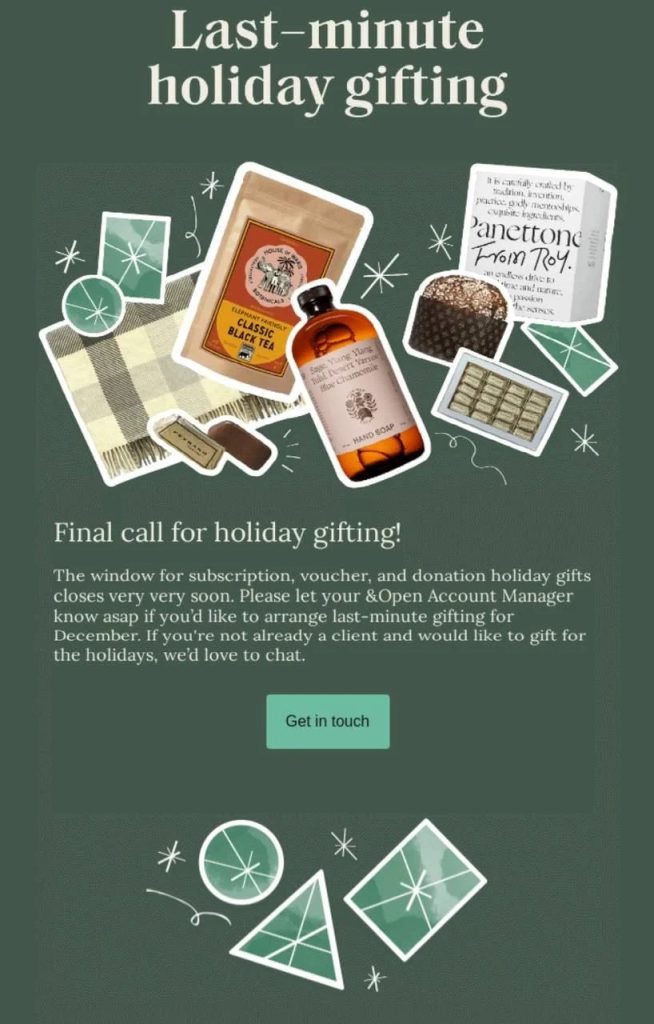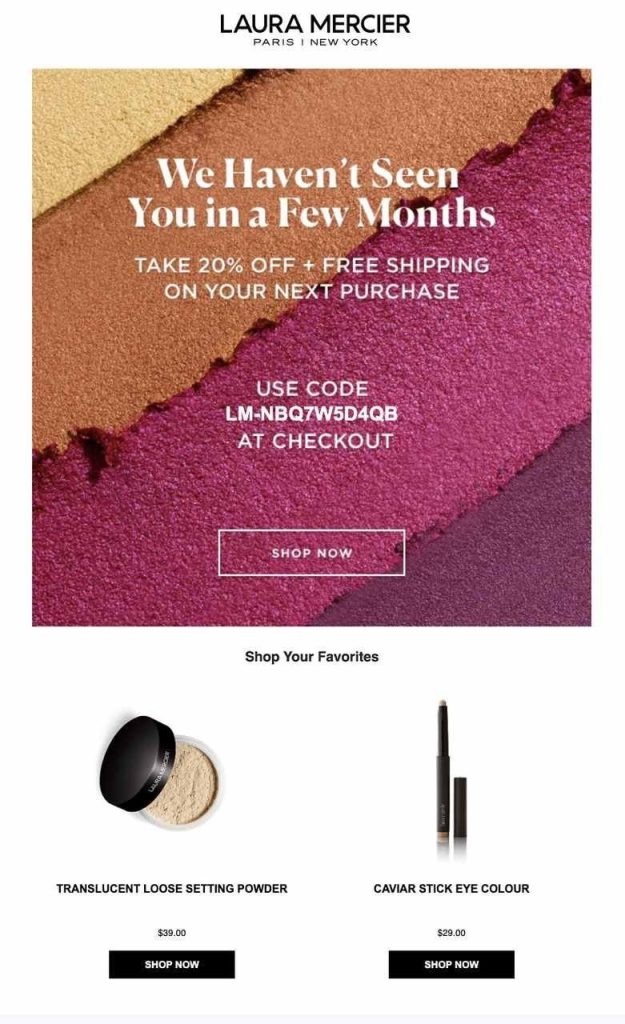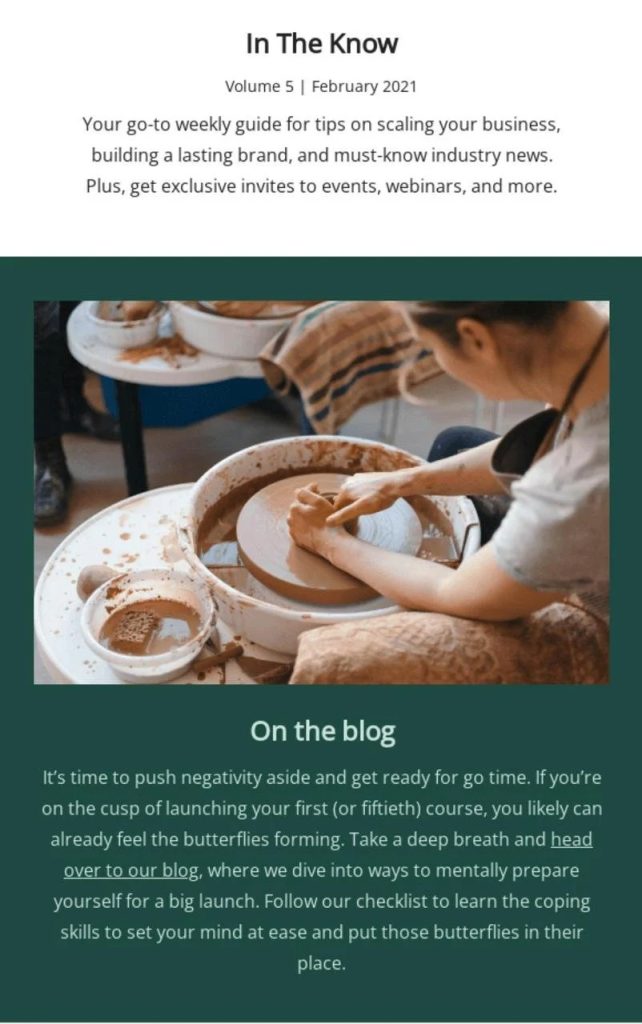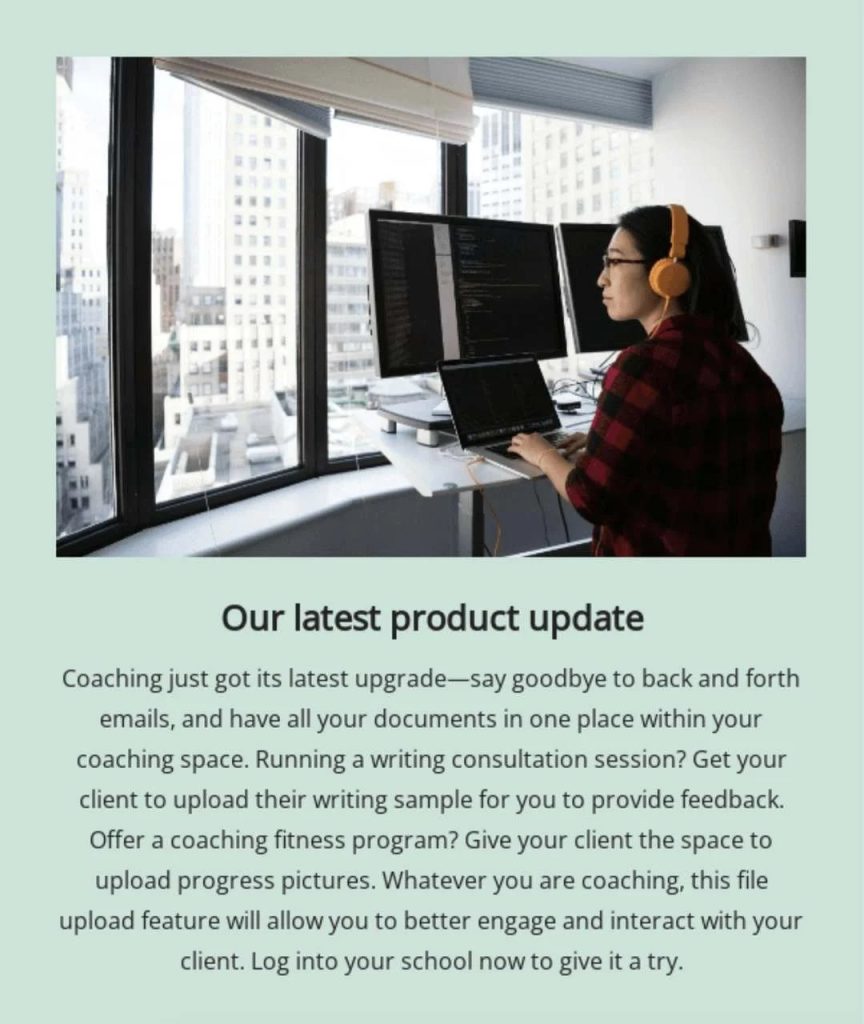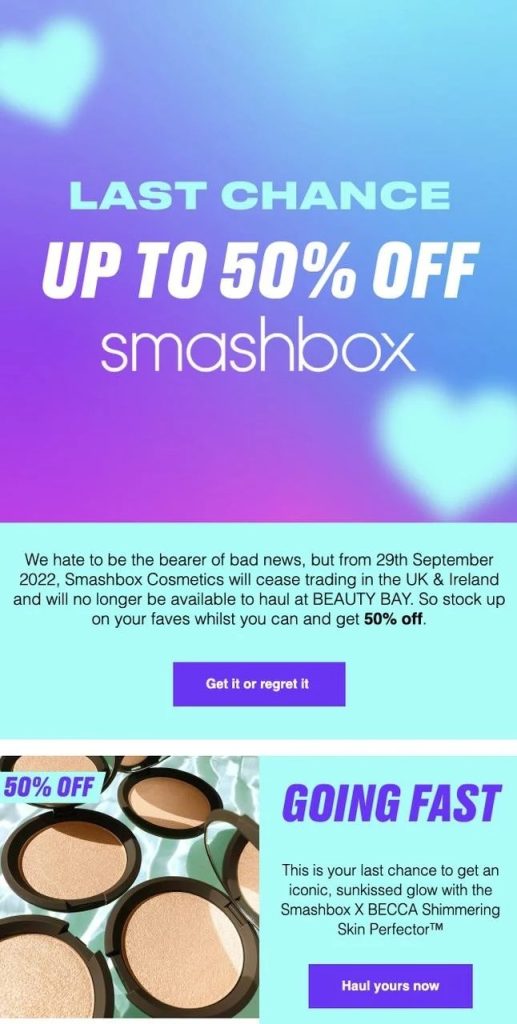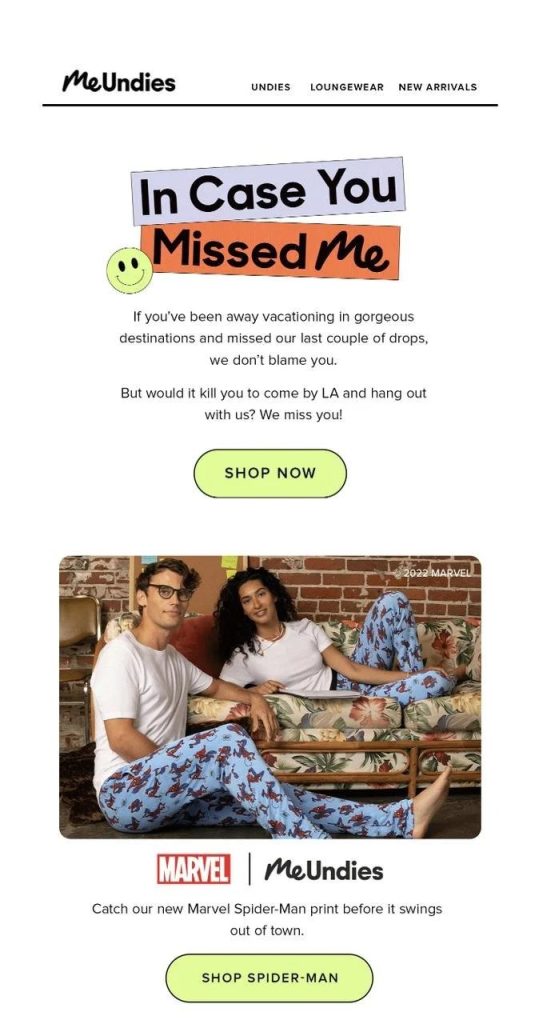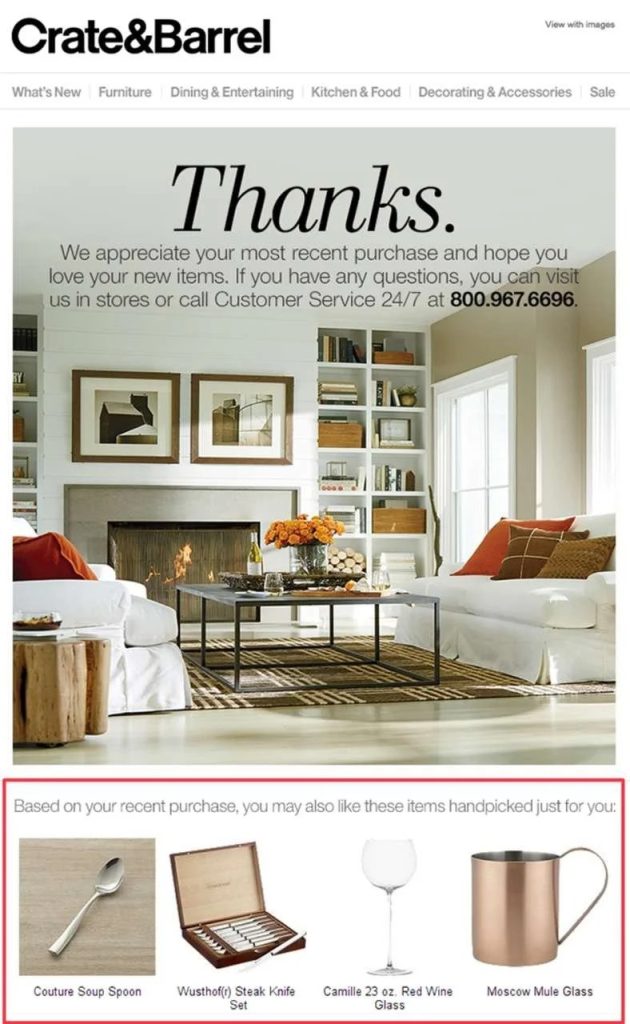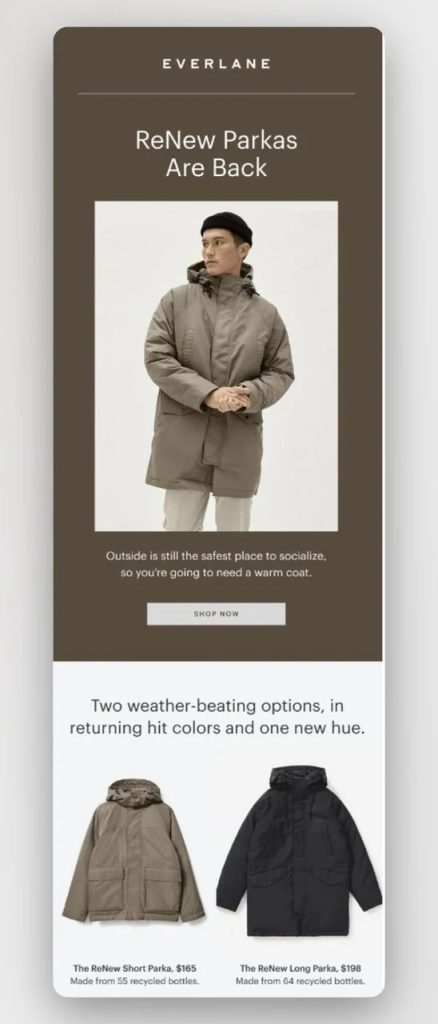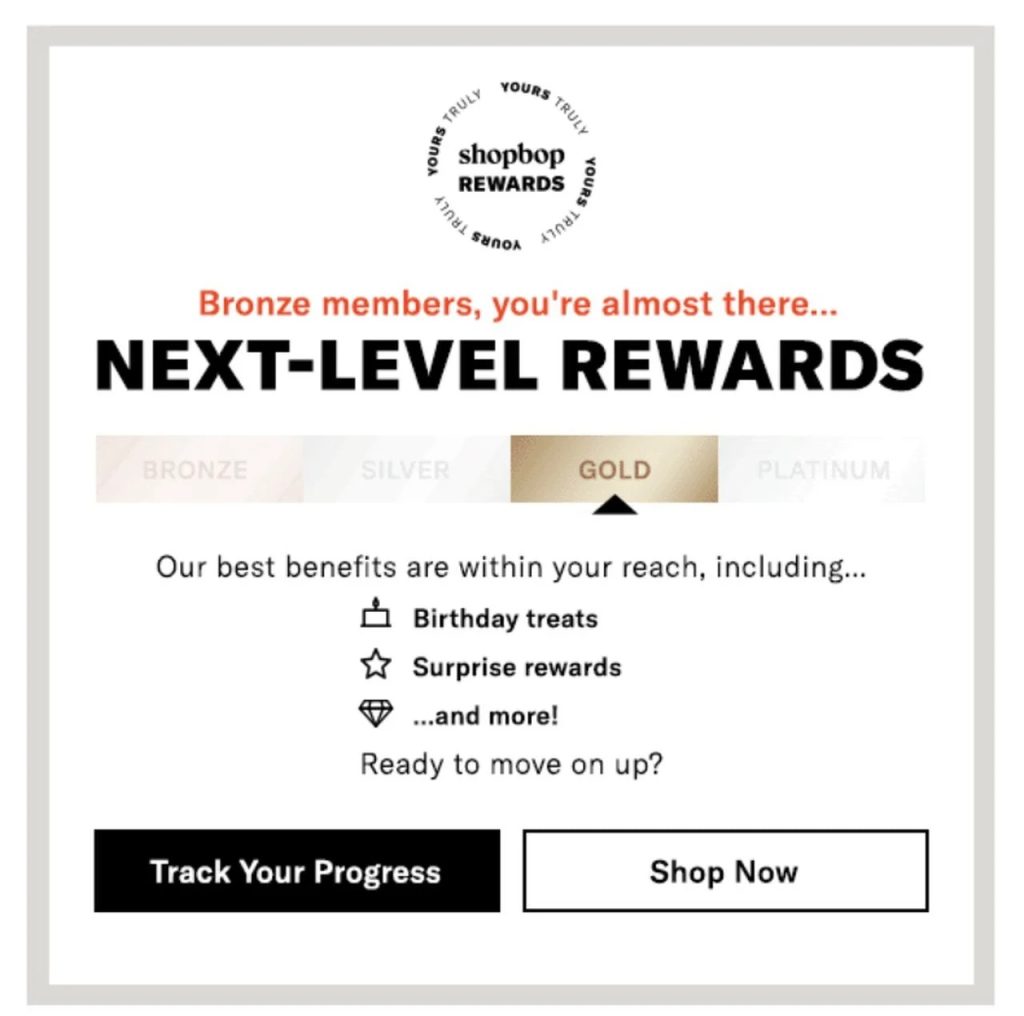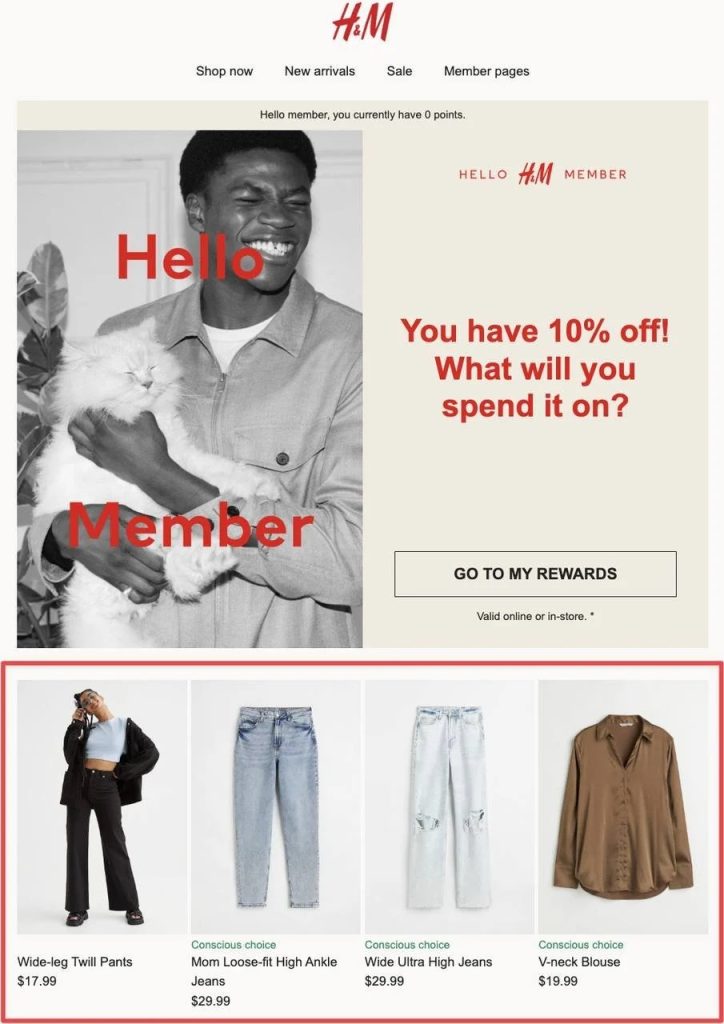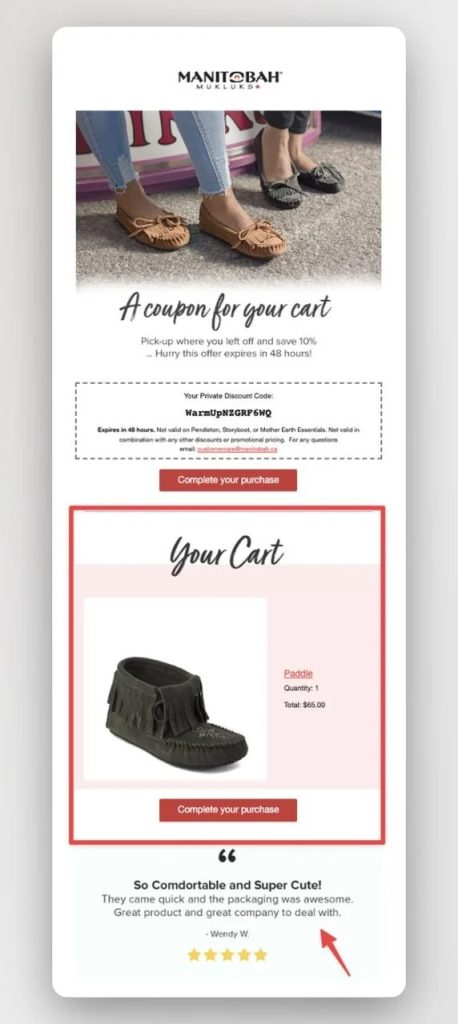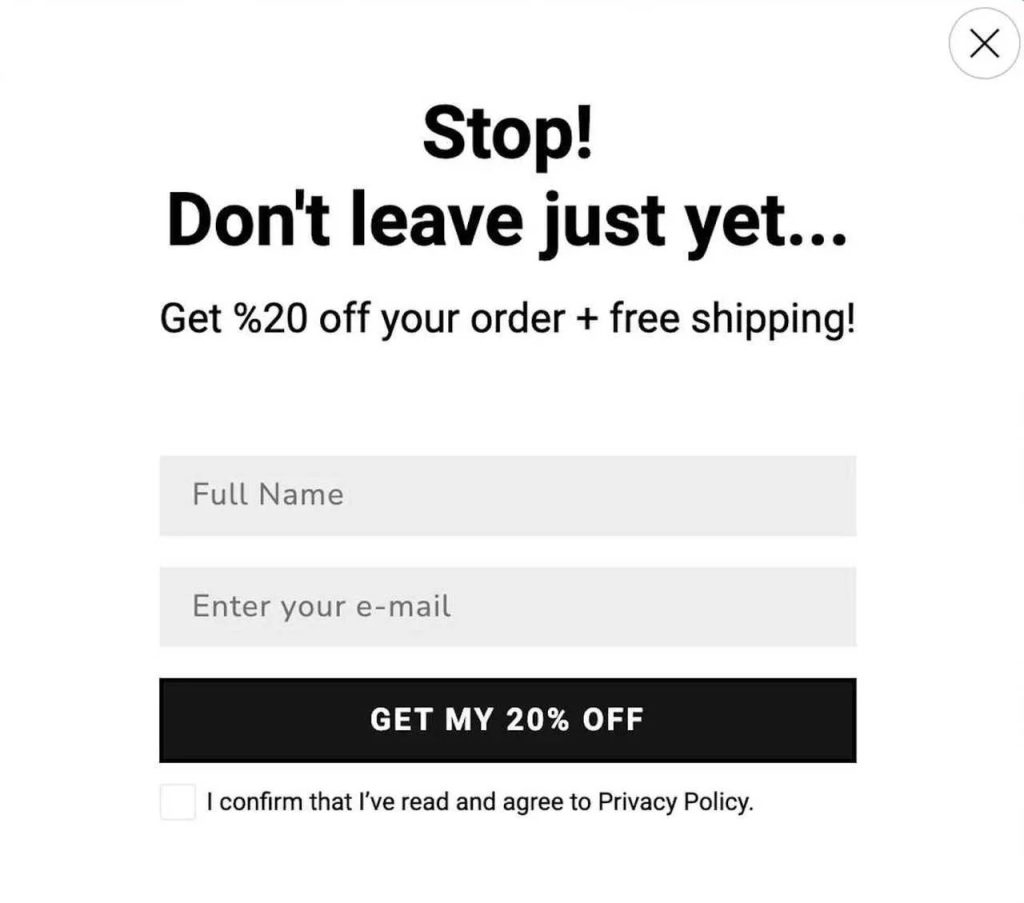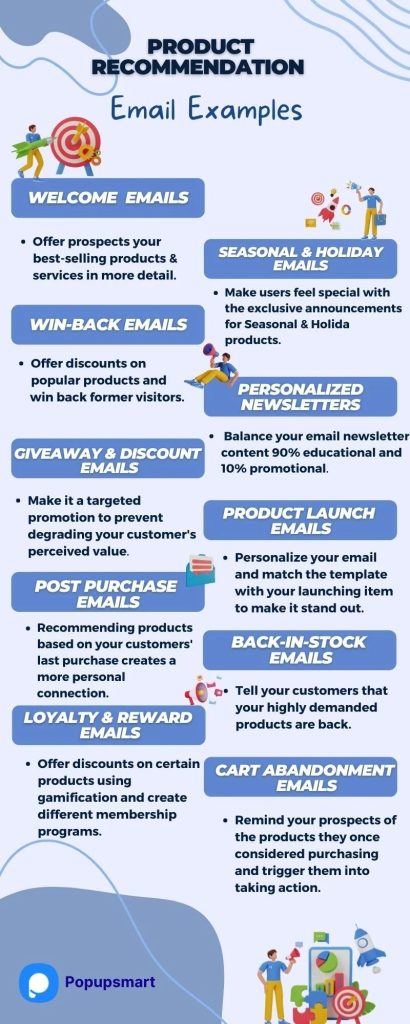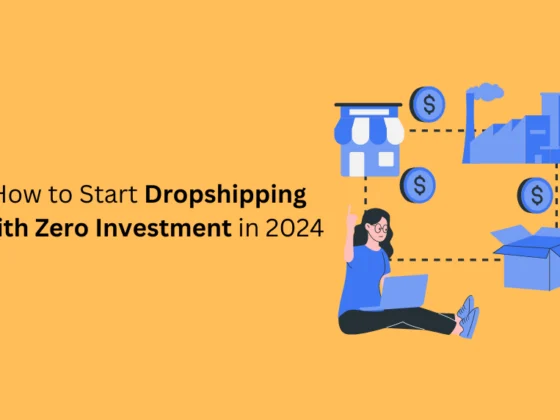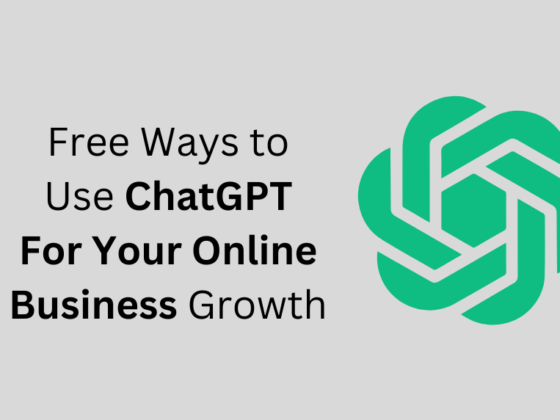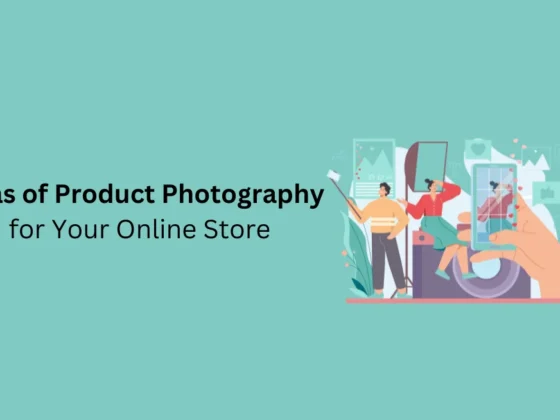Most likely, you are already using email marketing to promote your brand, so if you’re searching for product recommendation email examples to drive more leads to your e-commerce store and boost sales, keep reading.
Emails are the most cost-effective marketing tool, and distributing personalized product recommendations is a great way to establish customer relationships and improve their experience.
Checking on some of the best product recommendation email examples below can inspire you to make the most out of your efforts and maximize your conversion.
We have listed 10 practical ways to recommend your products in emails in addition to several examples of successful product recommendation emails from well-known brands.
Using this set of examples as a guide, you can create strategies that will benefit you and your customers both.
Contents:
- What is a Product Recommendation Email?
- What are the Best Product Recommendation Email Examples?
- What are the Benefits of Sending Product Recommendation Emails?
- Product Recommendation Emails Key Takeaways
- Product Recommendation Email Example Infographic
- Wrap Up
- Frequently Asked Questions
What is a Product Recommendation Email?
Simply put, a product recommendation email is a promotional strategy in email marketing campaigns that you can use to highlight some of your e-commerce products or services and ultimately drive sales.
You can have many different email marketing plans to strategically use product recommendations, increase traffic to your e-commerce site, and improve your average purchase value.
A timely, well-designed, and relevant product recommendation email with enough value can potentially trigger the reader into making a purchase
So you better plan a user-friendly email marketing strategy that guides customers in the right direction.
What are the Best Product Recommendation Email Examples?
A tailored product recommendation will stand out in your email and motivate people to click on your website link or make a purchase, so make sure you use it wisely.
Wondering how? Here are 10 tried-and-true examples of how to use product recommendations in your email marketing campaigns and maximize their effectiveness.
Let’s take a look at each of these examples from successful brands and explore their values.
1. Welcome Emails
In your email marketing efforts, welcome emails establish the first point of contact with your prospects and are more likely to be opened.
In fact, our email marketing statistic research shows that the average open rate for welcome emails is over 86%, and the average CTR is around 25%.
That’s a considerable chance for engagement which can result in a conversion or — in the worst-case scenario — unsubscribing.
Well, having unsubscribers is the last thing any marketer wants, which is why you should prepare to make a good impression from the very beginning.
Your welcome email is your best chance to shine and let prospects know about your best-selling products and services in more detail.
Use this opportunity to present the best of your brand in the eyes of your email readers as BonoBos brand did in this email example.
This is how you can establish a positive first impression with a first purchase discount offer.
Having created an account and consenting to receive emails, it is likely that your new prospect is already familiar with your brand, yet undoubtedly you are better acquainted with your products
Try to showcase your best-selling products in between your welcome email; To be more precise, you can divide them into different categories to give your recipient a better user experience
2. Seasonal & Holiday Emails
Seasonal and holiday emails are great opportunities to bring your best-selling items to the forefront of your prospects’ minds.
The beginning of the holiday season is all about what to gift, so take advantage of this chance to recommend your best-selling products before shoppers make their minds up.
If you are releasing new products for Christmas or Autumn, this is an excellent opportunity to advertise them.
You can offer the recipient exclusive discount offers limited for that season following relevant themes according to that time of the year.
A report by Bussiness Wire indicates that “64% of customers are more likely to open emails during the holidays with the top content they are interested in seeing, including deals/discounts (84%), holiday-themed items and décor (43%) and gift ideas/inspiration (39%).”
See how & the Open gifting platform takes advantage of FOMO (Fear of Missing Out) in this seasonal product recommendation email example by indicating the holiday season is nearly over and inviting recipients to get in touch with them.
By displaying the most popular items on top of the template, the email attempted to give the recipient ideas about which gifts they could pick up.
3. Win-Back Emails
A customized win-back email that offers value to the recipient can kick-start your customer loyalty program, leading to more quality leads and conversions.
These emails encourage the recipient to re-engage and typically start with subject lines like “We Miss You” or “Long Time No See,”, which create an emotional connection with them.
Look at this win-back email example from Laura Mercier, incentivizing the dormant user by offering 20% off and free shipping on the next purchase and showcasing its favorite products this way.
Since acquiring a new customer is more expensive than keeping your existing customers, it makes more sense to keep them happy by offering discounts and suggesting products they might like, and encouraging them to purchase.
To be more accurate, it’s better to use automation in this regard and send automatic yet personalized win-back emails.
Want to increase your engagement rate and boost your email marketing campaigns? You better start taking personalization seriously.
A personalized product recommendation in your newsletter is more likely to lead to sales than just any random offer, but you need to be very thoughtful in your approach.
In general, subscribers do not always want to hear about your products and services, so you should try to balance your newsletter content 90% educational and 10% promotional.
Avoid self-promotion in the first part of your email and focus on delivering educational, relevant, and timely content to your subscribers.
This newsletter email from Teachable, an all-in-one platform that helps educators create and sell courses online, is my ideal example of balancing educational and promotional content.
See how it starts the newsletter by sharing new relevant, helpful content and invites the recipients to look at the recently published blog posts.
And after a brief introduction containing some educational tips, it announces the recent product updates and invites the reader to log in to their school and try it themselves.
In the end, when your recipients feel comfortable that you are not spamming them with promotions, they begin to trust you and take your product recommendations seriously.
5. Giveaway & Discount Emails
A little bit of love (AKA discounts & giveaways) never hurt anybody.
As mentioned earlier, giveaways and discounts are among the most powerful incentives for users to subscribe to your email list.
However, if you use this approach, you better make it a targeted promotion to prevent degrading your customer’s perceived value while promoting your special offers.
Beauty Bay knows how to harness this strategy in their email marketing campaigns by providing a limited-time 50% off on one of their products.
Taking advantage of Hick’s law psychology add a well-planned and tailored product recommendation with a time-limited discount to your email and make the most of your offers and boost your conversion.
6. Product Launch Emails
A product launch email is another way to recommend your new items exclusively and persuade the readers to purchase.
You can use this email marketing tactic to inform recipients about your latest products and service upgrades to make them feel special by giving them first access.
Look how this MeUndies product launch email promotes the new “Marvel Spider-Man print” with a friendly image and a witty title that says “In Case You Missed Me” using the brand’s overall style.
See how it uses the colors of the new products throughout the whole email and makes the recommendation the only point of interest.
A product launch email that aligns with the new item you’re launching can make your email stand out and get your audience’s attention.
7. Post Purchase Emails
Post-purchase emails are another example of how to recommend your products properly, and you’d be surprised to find out how effective they are.
It’s almost like a win-back email, except you can take advantage of the knowledge you have from your prospect’s last purchase to suggest more personalized products.
Recommending products based on your customers’ last purchase creates a more personal connection and makes them feel valued.
This thoughtful product recommendation from Crate&Barrel in a post-purchase email explains everything.
For a product recommendation to work in post-purchase emails, it is crucial to take personalization, relevancy, and timing into account.
You can also ask them to write you feedback on their last purchase experience and offer a discount for their next purchase on the recommended products.
This way, you’ll get two giggles from one tickle. ????
8. Back-in-Stock Emails
We have all experienced that bitter moment when you find your favorite item online and click to purchase, only to discover that it is out of stock.
What if you could turn your out-of-stock items into an opportunity?
Usually, when a product with high demand sells out, it takes time for the brand to make them available again.
Sending back-in-stock emails recommending highly demanded products to your subscribers is the perfect solution to generate attention for your best-selling products.
See how Everlan draws attention to their in-stock items and recommends them by providing details, such as their colors and pricing, and promoting their recycled product mission.
By tailoring your back-in-stock emails based on your subscriber’s preferences, you can encourage them to revisit the item they were interested in and add a few more relevant items for them to consider.
9. Loyalty & Reward Emails
Loyalty and reward programs are stairways to the hearts of your customers that can be enhanced even further by sending targeted product recommendation emails.
Promoting your products with loyalty rewards can be a strong incentive for your readers to return to you in the future.
Incorporating gamification into a rewards scheme and creating different membership programs is a great way to keep customers engaged.
See how H&M leverages its loyalty program to generate engagement by offering 10% off and then displaying some of its popular items at the end of the email to encourage readers to take action.
By offering different membership plans, such as bronze, golden, and platinum, subscribers are motivated to buy more from them to reach the next level.
10. Cart Abandonment Emails
An average of %69.80 users ghost online shops and leave items in their cart without taking action.
The majority of online retailers struggle with cart abandonment, regardless of how well-optimized and beautifully designed their store looks.
It’s at this point that cart abandonment emails come to the rescue.
Sending cart abandonment emails reminds your prospects of the products they once considered purchasing and triggers them into taking action.
You can also recommend similar products based on the items they left behind in their carts and increase the possibility of them making a purchase.
Look at this perfect example of a cart abandonment email from Manitobah brand.
See how the brand promotes other products in the first part of the email with an eye-catching image and then reminds the recipient about their abandoned cart with an exclusive discount code.
Displaying the product image with a CTA that says “Complete Your Purchase” and the customer testimonials at the end of the email shows how well-crafted this email is.
In addition to emails, you can also use cart abandonment popups to reduce revenue loss and encourage visitors to complete their purchases.
As a bonus, exit-intent popups can help you to capture the email addresses of customers who are about to leave their carts for future email marketing campaigns.
Using an easy-to-use popup builder like Popupsmart that requires no-coding knowledge is a great way to increase email subscribers.
Try it out for yourself and see how easy it is to design and customize email popups.
What are the Benefits of Sending Product Recommendation Emails?
In the highly competitive e-commerce world, where most promotional emails go to spam boxes, product recommendation emails benefit your prospects by facilitating their decision-making process.
By sending exclusive product recommendation emails to your prospects, your business will stand out, and your customers will be more inclined to stay in touch
Following this strategy, users no longer have to browse endless product listings to find products that match their tastes and style.
All they need to do is to click on the exclusive link they received in their email to have dozens of suggestions customized just for their taste.
This way, not only do you increase your brand’s average basket value, but you acquire loyal customers, who ideally can turn into brand advocates.
Product Recommendation Emails Key Takeaways
In a world of infinite products, it can be difficult to know what your buyers want, however considering their customer journey stage you can be more exclusive in what you suggest and provide a better experience.
A highly calculated process is needed to determine the most effective recommendation strategy for your email marketing.
Here are some more key takeaways to consider when designing your product recommendation emails:
- Use Automation: By using machine learning, you can create a strategy that automatically suggests products depending on the context and available data.
- Look into Shopping History: Checking the latest purchases of your customers helps you to get a better understanding of their tastes and preferences and suggest products accordingly.
- Bunndle Suggest Your Products: Offers a discount on complementary products that are usually purchased along with the item in view.
- Promote Bestselling: Many people follow trends and like to know what is popular, so suggesting current bestsellers in your emails could be useful.
- Get Personalized: Recommends products based on users browsing behavior and try to make it more informational than promotional.
- Consider Emails Timing: Timing is everything when recommending a product in your emails. You should target your consumers with items they won’t be able to resist at the best time following their last interaction with your brand.
Product Recommendation Email Example Infographic
<br><a href="https://popupsmart.com/blog/product-recommendation-email-examples">https://popupsmart.com/blog/images/i/n/f/o/g/infographic-product-recommendation-email-example-50360e16.jpg' alt='an email recommendation email example infographic by Popupsmart popup builder' width='640px' border='0' /></a>
With this Product recommendation email example infographic, you can get the key points more quickly and ensure you stay on top of best practices. Feel free to share it on your blog using the link above.
Wrap Up
It’s hard to beat a well-executed product recommendation email, and with these 10 examples showing what top brands are doing, you now have some great new sources of inspiration.
The key is to be as relevant and personal as possible and to keep your email focused on what will benefit the customer. And, finally, if your product leads to an increase in sales, then all the better!
It is a good idea to test different versions of your email to see what works best for your customer base.
Over time, you’ll continually improve your open and conversion rates by testing and experimenting.
Make sure to always keep your users in mind when designing your emails and try to provide value to each one
Frequently Asked Questions
Why is It Important to Send Product Recommendation Emails?
Product recommendation emails can be the trigger your prospects need to become customers. Sending timely and relevant product recommendation emails to your email list is a way to increase customer engagement, boost your traffic, and eventually improve your customer retention rate.
What are E-commerce Recommendations?
An e-commerce recommendation is when a brand recommends products to its customers based on their shopping history and perceives interest. Shoppers in physical stores generally get recommendations from knowledgeable salespeople; however, for e-commerce, this is accomplished through the homepage and email suggestions.
How Can I Personalize Product Recommendation Emails?
To personalize your product recommendation emails, you can start by mentioning your recipient’s name in the subject line and include discount codes for the products they’ve recently visited on your website. You can also check the customer’s shopping history and, through machine learning, recommend more tailored products based on their taste and past purchases.
If you enjoyed this, you might also enjoy these post
